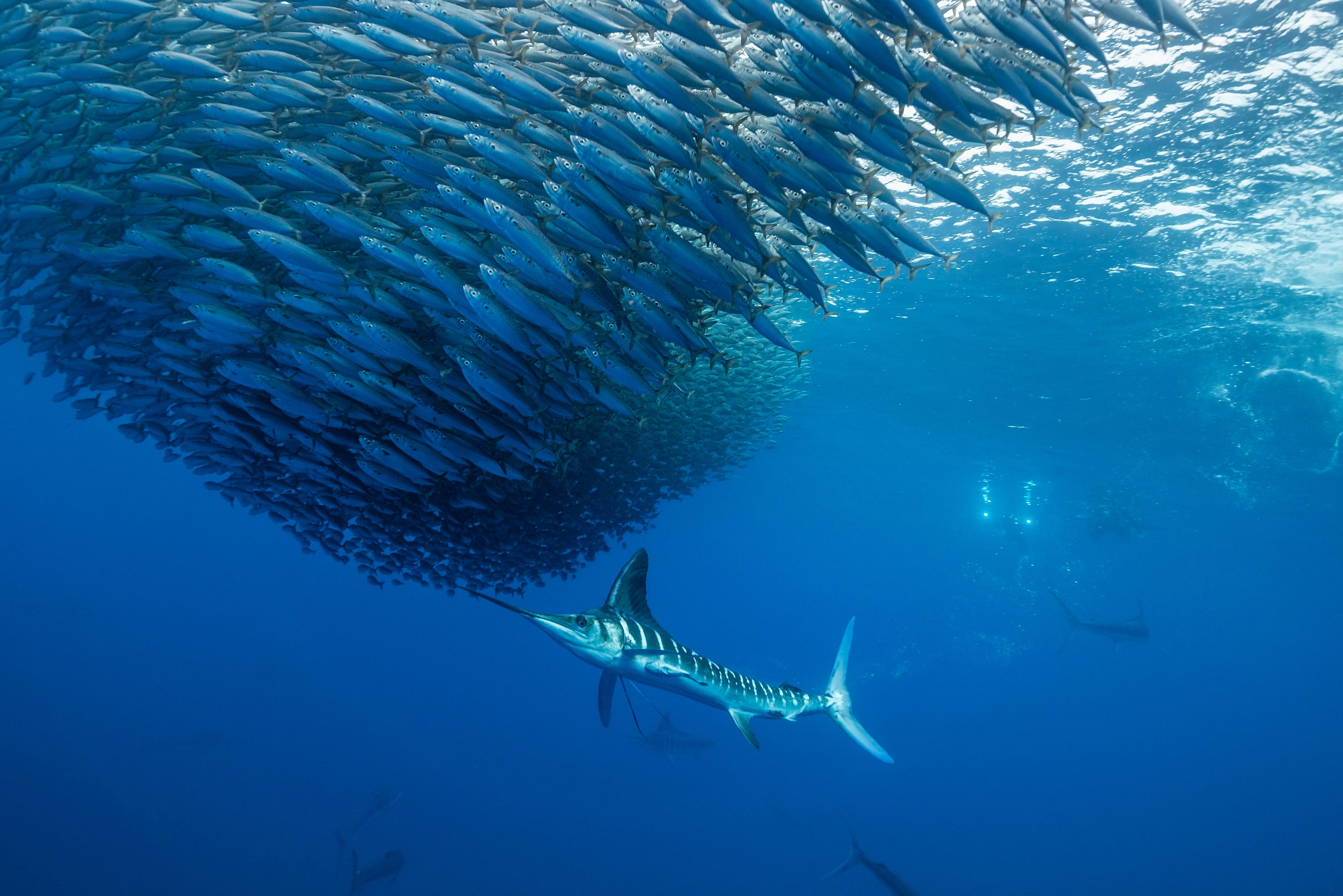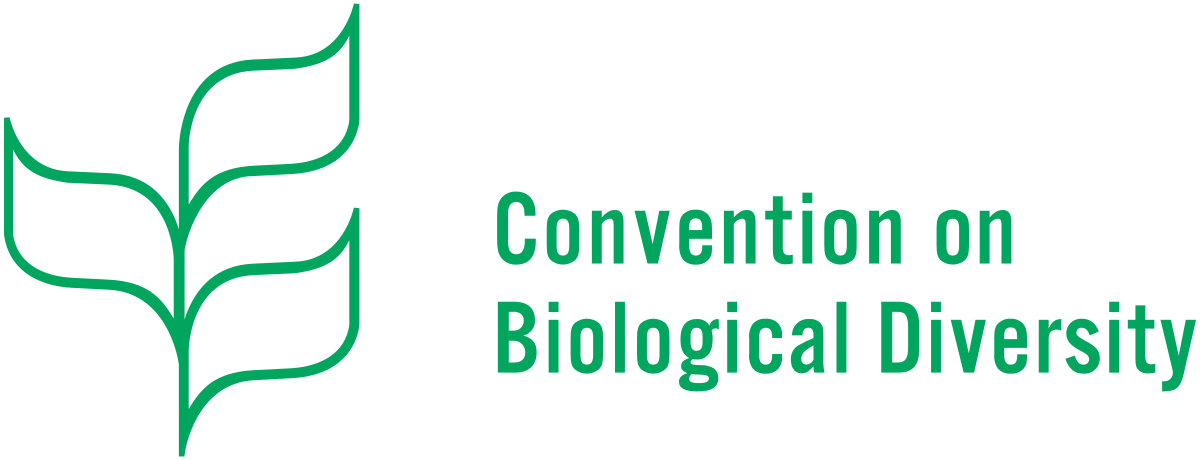Convention on Biological Diversity
The UN Convention on Biological Diversity (CBD) is part of the "Rio Treaties" adopted in 1992 at the United Nations Conference on Environment and Development (UNCED), also known as the Earth Summit.
The Convention has 3 main objectives:
(1) The conservation of biological diversity
(2) The sustainable use of the components of biological diversity
(3) The fair and equitable sharing of the benefits arising out of the utilization of genetic resources
The Convention has been ratified by 196 states as of 2021.
 Two supplementary agreeements to the CBD also exist - the Cartagena protocol - governing the movements of living modified organisms produced by biotechnology, and the Nagoya protocol, which provides a legal framework for implementing the last objective of the CBD, the fair and equitable sharing of benefits arising out of the utilization of genetic resources.
Two supplementary agreeements to the CBD also exist - the Cartagena protocol - governing the movements of living modified organisms produced by biotechnology, and the Nagoya protocol, which provides a legal framework for implementing the last objective of the CBD, the fair and equitable sharing of benefits arising out of the utilization of genetic resources.
How the Convention works
The convention's governing body is the Conference of the Parties (COP), consisting of all governments (and regional economic integration organizations) that have ratified the treaty. This ultimate authority reviews progress under the convention, identifies new priorities, and sets work plans for members.
The CBD Secretariat operates under UNEP, the United Nations Environment Programme. Its main functions are to organize meetings, draft documents, assist member governments in the implementation of the programme of work, coordinate with other international organizations, and collect and disseminate information.
The CBD also has two subsidiary bodies - the Subsidiary Body for Scientific, Technical and Technological Advice (SBSTTA), and the Subsidiary Body on Implementation (SBI). They are composed of a panel of experts appointed by signatory governments, and make reccommendations to the COP on scientific and technical issues, or issues of implementation respectively.
Post-2020 Biodiveristy Framework
At COP10 in 2010 the CBD created the the "Aichi Targets" which provided the structure to addressing five strategic goals related to biodiversity conservation:
- Strategic Goal A: Address the underlying causes of biodiversity loss by mainstreaming biodiversity across government and society
- Strategic Goal B: Reduce the direct pressures on biodiversity and promote sustainable use
- Strategic Goal C: To improve the status of biodiversity by safeguarding ecosystems, species and genetic diversity
- Strategic Goal D: Enhance the benefits to all from biodiversity and ecosystem services
- Strategic Goal E: Enhance implementation through participatory planning, knowledge management and capacity building
As of 2021, none of the 20 Aichi Biodiversity targets were fully achieved at the global level. These have now been updated with a first draft of the post-2020 global biodiversity framework.
The framework includes 21 targets for 2030 that call for, among other things:
- At least 30% of land and sea areas global (especially areas of particular importance for biodiversity and its contributions to people) conserved through effective, equitably managed, ecologically representative and well-connected systems of protected areas (and other effective area-based conservation measures)
- A 50% greater reduction in the rate of introduction of invasive alien species, and controls or eradication of such species to eliminate or reduce their impacts
- Reducing nutrients lost to the environment by at least half, and pesticides by at least two thirds, and eliminating the discharge of plastic waste
- Nature-based contributions to global climate change mitigation efforts of least 10 GtCO2e per year, and that all mitigation and adaptation efforts avoid negative impacts on biodiversity
- Redirecting, repurposing, reforming or eliminating incentives harmful for biodiversity, in a just and equitable way, reducing them by at least $500 billion per year
- A $200 billion increase in international financial flows from all sources to developing countries.
Fulfilling the targets is vital to reversing global biodiveristy loss at scale, and contributing to combatting climate change. The post-2020 global biodiversity framework will be presented for consideration at the resumed session of COP-15, in Kunming, China in mid-2022.
The Sargasso Sea EBSA
In 2008 in Bonn, Germany, the Parties to the Convention on Biological Diversity adopted a set of seven scientific criteria to identify ecologically or biologically significant areas (EBSAs) in the global marine realm (see CBD COP 9 Decision IX/20).
In March 2012, the Sargasso Sea was described as an "Ecologically or Biologically Significant Area” at the Convention on Biological Diversity's Wider Caribbean and Western Mid-Atlantic Regional Workshop to Facilitate the Description of Ecologically or Biologically Significant Marine Areas (EBSAs), in Recife, Brazil- 28 February- 2 March 2012.
The Commission, then the Sargasso Sea Alliance, sponsored a team of scientists to participate, including: Jeff Ardron (Marine Conservation Institute), Professor Dan Laffoley (IUCN/WCPA; Sargasso Sea Alliance Science Coordinator), Dr. Joanna Pitt (Bermuda Department of Environmental Protection), and Dr. Ricardo Santos (University of the Azores, Portugal).
On behalf of the Government of Bermuda, Dr. Joanna Pitt presented the Sargasso Sea proposal, based on the SSA Science Case. Dr. Patrick Halpin and Jesse Cleary (Duke University Marine Geospatial Ecology Lab) provided technical mapping assistance and overall guidance.
The EBSA proposal was presented further as a poster in April 2012 at the Convention on Biological Diversity's Subsidiary Body on Scientific, Technical and Technological Advice (SBSTTA) meeting.
In October 2012, the CBD COP11 in Hyderabad, India, agreed that the areas described in the regional workshops as ecologically or biologically significant - inculding the Sargasso Sea - should be placed in the CBD EBSA Repository and transmitted to the UN and other competent organizations for further action. This was a huge success in the Commission's first objective of securing international recognition for the ecological importance of the Sargasso Sea. Click here to download the CBD's press release.
Remarks on the process from Kristina Gjerde, Chair of the Sargasso Sea Alliance’s Legal Work Group and IUCN High Seas Policy Advisor, and Patricio Bernal, Coordinator of the Global Ocean Biodiversity Initiative.
New England and Corner Rise Seamounts EBSA
In March 2014, the Convention on Biological Diversity convened a regional workshop to consider potential Ecologically or Biologically Significant Areas (EBSAs) in the Northwest Atlantic region. The New England and Corner Rise Seamount Chains were successfully included as Area #6.
The New England and Corner Rise Seamount EBSA was successfully described during the 12th meeting of the Conference of the Parties to the Convention on Biological Diversity (Pyeongchang, Republic of Korea, 6 - 17 October 2014).



